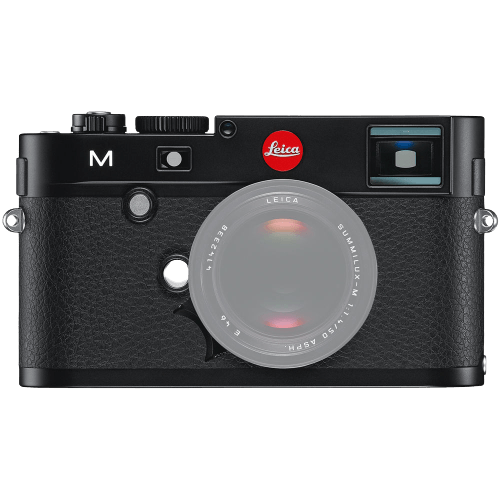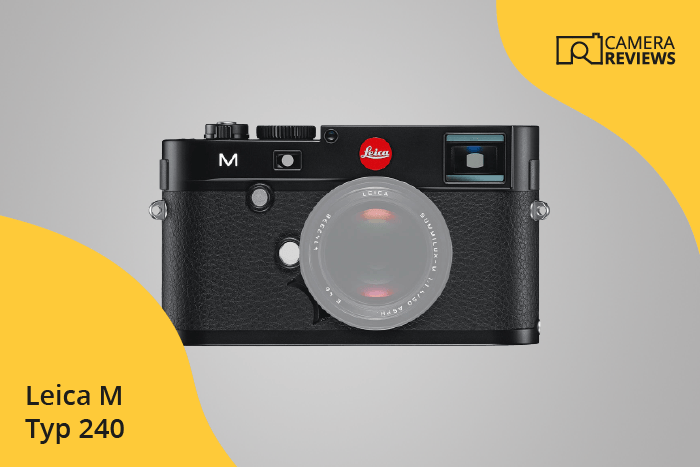Leica M Typ 240 Specs and Scores

The Leica M Typ 240 scores 57/100 in our evaluation. Announced on September 17, 2012, and released the same year, it has been in the market for almost a decade. Priced at $6,950, it is a mirrorless camera with dimensions of 139 x 80 x 42mm and a weight of 680g or 1.50lbs.
Comparing to today’s market, the Leica M Typ 240’s specifications seem outdated. Despite this, the camera still holds a respectable score and has its unique charm for photography enthusiasts.
Leica M Typ 240 Overview and Optics
The Leica M Typ 240 receives an optics score of 62/100. It is equipped with 24 megapixels, a CMOS sensor, and a Maestro processor. The camera has a shooting speed of 3 frames per second, a DXOMARK score of 84 for its sensor, and a full-frame sensor size. It utilizes the Leica M lens mount and has a 3:2 aspect ratio. However, it lacks image stabilization.
When comparing these specifications to other cameras in today’s market, the Leica M Typ 240 shows its age. The absence of image stabilization is a notable drawback, as it has become a standard feature in most modern cameras. Additionally, a shooting speed of 3 frames per second is relatively slow, limiting the camera’s versatility.
Despite these shortcomings, the Leica M Typ 240 still offers solid performance in certain aspects. The full-frame sensor and 24-megapixel resolution provide high-quality images, while the Leica M lens mount allows for compatibility with a range of premium lenses.
Leica M Typ 240 Video Performance
The Leica M Typ 240 has a video score of 43 out of 100. The camera offers Full HD video recording with a maximum resolution of 1920 x 1080 pixels. However, it only supports a maximum frame rate of 30fps, which may not be sufficient for those looking for smoother, more professional-looking videos.
In today’s market, the Leica M Typ 240’s video capabilities fall behind more advanced cameras that offer 4K resolution and higher frame rates. Additionally, the lack of built-in time-lapse functionality further limits its appeal for videographers.
Taking these factors into account, the Leica M Typ 240’s video performance is not the strongest aspect of the camera, making it less suitable for those prioritizing video capabilities.
Leica M Typ 240 Features and Benefits
The Leica M Typ 240 features a score of 54/100, which is a moderate score in the market. With a 3-inch screen size and a resolution of 920,000 dots, the camera offers decent image preview. However, the lack of a touchscreen, flip screen, GPS, WIFI, and Bluetooth limits its functionality and adaptability to modern photography needs.
In comparison to other cameras in today’s market, the Leica M Typ 240 falls short in terms of advanced features. Many contemporary cameras offer touchscreens, flip screens, and wireless connectivity options, which enhance user experience and convenience. Despite its moderate feature score, the Leica M Typ 240 still delivers high-quality images and video, making it a suitable option for those who prioritize image quality over advanced features.
Leica M Typ 240 Storage and Battery
The Leica M Typ 240 receives a storage and battery score of 27/100. This camera has a single memory card slot, accepting SD, SDHC, and SDXC cards. In today’s market, having only one memory card slot might be a drawback for some users who prefer backup storage or additional storage capacity.
Regarding battery life, the Leica M Typ 240 provides 500 shots per charge, powered by a BP-SCL2 battery. This battery life is average compared to other cameras in the market. However, the camera lacks USB charging, which can be inconvenient for users who need to recharge on the go.
Taking these factors into account, the Leica M Typ 240’s storage and battery capabilities are not its strongest points, but they still offer decent performance for casual users.
Leica M Typ 240 Alternatives
Do you want to know how the Leica M Typ 240 compares to its competitors? Have a look at the most popular comparisons for this camera below:
- Fujifilm X-Pro3 vs Leica M Typ 240
- Fujifilm X-T5 vs Leica M Typ 240
- Hasselblad 907X 50c vs Leica M Typ 240
- Leica M Typ 240 vs M10
- Leica M Typ 240 vs M11
- Fujifilm GFX 50S II vs Leica M Typ 240
Leica M Typ 240 FAQ
Does the Leica M Typ 240 Have Built-in Image Stabilization?
The Leica M Typ 240 does not have built-in image stabilization. Users may need to rely on a steady hand or a tripod to minimize camera shake during shooting.
Does the Leica M Typ 240 Support 4K Video Recording?
No, the Leica M Typ 240 does not support 4K video recording. The maximum video resolution it offers is Full HD (1080p).
What Size Sensor Does The Leica M Typ 240 Have?
The Leica M Typ 240 features a full-frame (35mm) sensor, which provides excellent image quality and low-light performance.
Does the Leica M Typ 240 Have a Dual Memory Card Slot?
No, the Leica M Typ 240 has a single memory card slot, which supports SD, SDHC, and SDXC cards.
Does the Leica M Typ 240 Have a Touch Screen?
No, the Leica M Typ 240 does not have a touch screen. It features a 3-inch LCD screen for image review and menu navigation.
Does the Leica M Typ 240 Have Wi-Fi and Bluetooth?
The Leica M Typ 240 does not have built-in Wi-Fi or Bluetooth connectivity for wireless image transfer or remote camera control.
Does the Leica M Typ 240 Have GPS?
No, the Leica M Typ 240 does not have built-in GPS for geotagging images.
Is the Leica M Typ 240 Weather Sealed?
Yes, the Leica M Typ 240 has a weather-sealed body, which provides protection against dust and moisture, allowing for use in various environmental conditions.
Does the Leica M Typ 240 Have a Built-in Flash?
No, the Leica M Typ 240 does not have a built-in flash. Users can attach an external flash via the hot shoe for additional lighting when needed.

